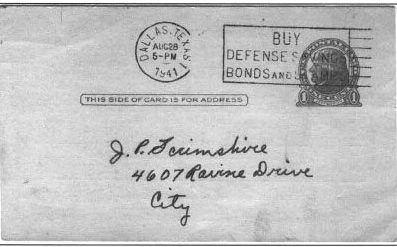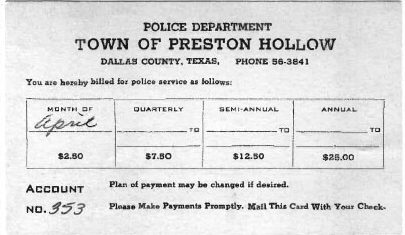Preston Hollow started out not as a neighborhood but as its own town. It was incorporated on Nov. 28, 1939, an area of 79.5 acres located around the intersection of Northwest Highway and Preston Road. But it remained an independent municipality until it was annexed into the City of Dallas in April 1945.
There’s more to Preston Hollow than meets the eye. Here are a few visuals to help showcase our neighborhood’s past.
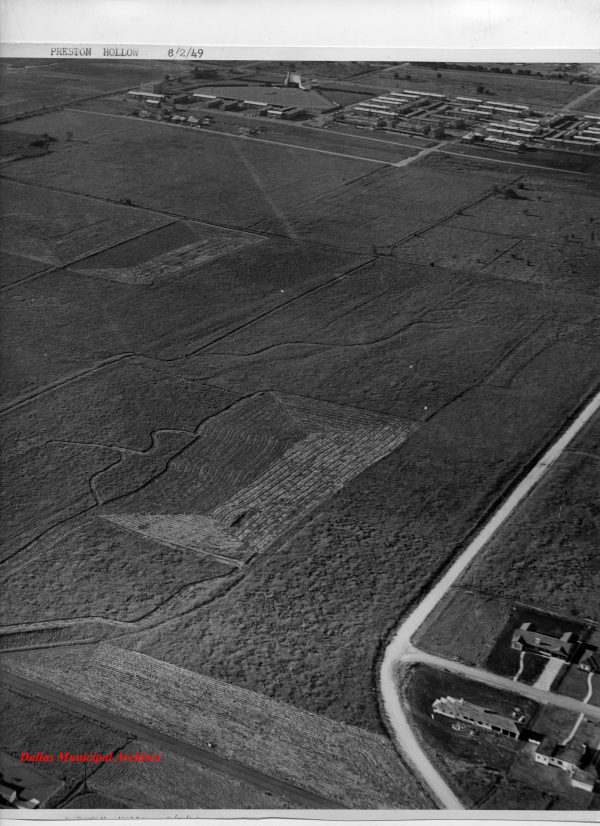
Aerial courtesy of Dallas Municipal Archives.
This aerial photo was taken in August 1949 and shows the future site of Preston Hollow Park. The curved road is Thackery Street, and at the top of the image is the Northwest Hi-Way Drive-In Theatre. The cinema was constructed in 1941 and demolished in 1963. It was located on Northwest Highway near Hillcrest Road, an area that’s now filled with retail and restaurant spaces.
Courtesy of Preston Hollow by Eva Potter Morgan.
Public safety is crucial to any functioning municipality, and it’s usually funded through taxes. But in the Town of Preston Hollow, cops were paid through voluntary subscriptions. And if that wasn’t flexible enough, residents could choose a payment plan: $2.50 a month, $7.50 a quarter, $12.50 for half a year or $25 annually. They just had to fill out the card and mail it back with a check.
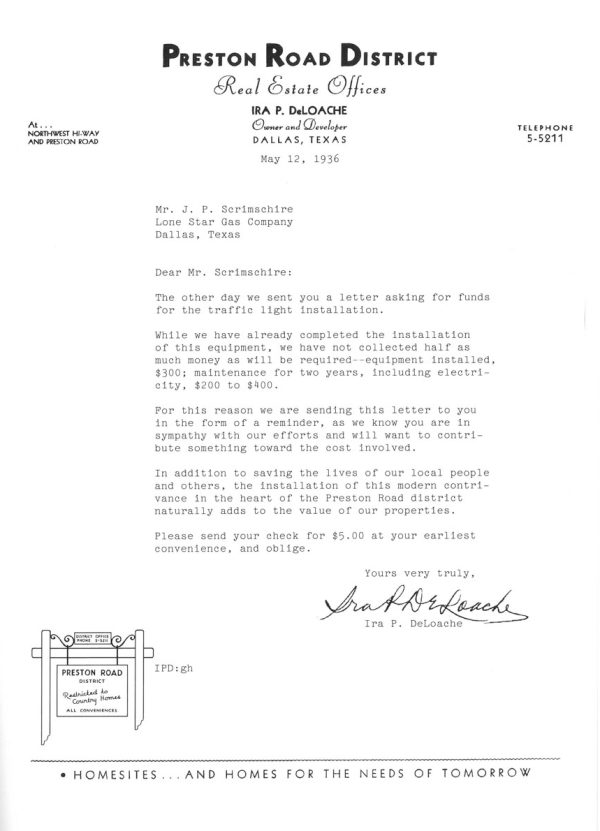
Courtesy of Preston Hollow by Eva Potter Morgan.
In the 1930s, the Texas Highway Department approved a “red and green, stop and go” electric 24-hour traffic signal light for the Preston Road District. It would be placed at the intersection of Northwest Highway and Preston Road. The property owners of the district would pay to install and maintain the light for two years, which was estimated to cost $500. Ira P. DeLoache, the chairman of the board of supervisors for the Dallas County Preston Road Fresh Water Supply District No. 10, wrote a letter to neighbors in April 1936, asking them to help fund the “modern life-saving contrivance.” Though the cost seemed steep, he wrote, it wouldn’t seem as burdensome when split among many neighbors. DeLoache also wrote to J. P. Scrimshire of the Lone Star Gas Company, asking him for money — $5, to be precise. Scrimshire was apparently in support of the traffic signal, and his financial gift would help, as the district had not even raised half of what would be required.
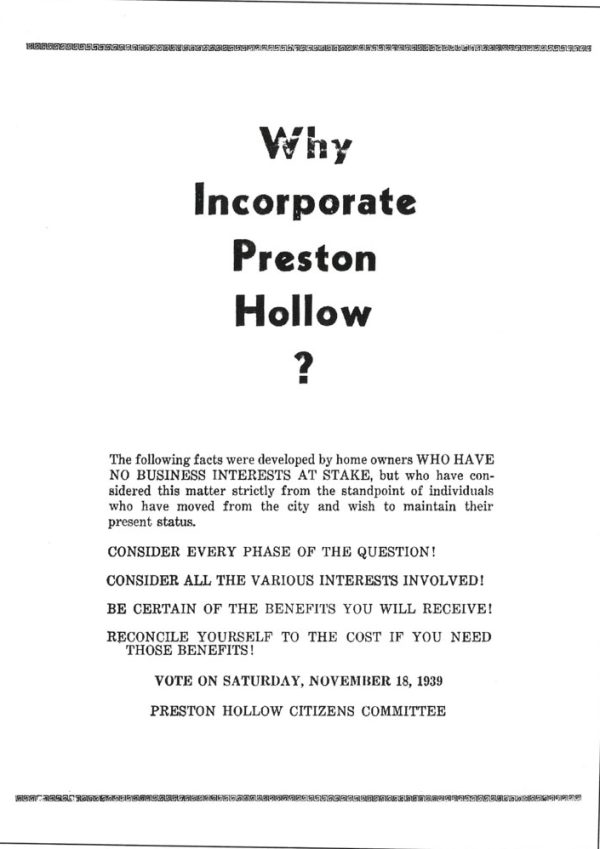
Courtesy of Preston Hollow by Eva Potter Morgan.
Residents of the Preston Road Fresh Water Supply District had a water supply, and kids could attend schools in the Vickery Independent School District. But some were concerned about being annexed by Dallas or University Park and about businesses moving into the residential area. That led to the idea of incorporating as a town. Two camps arose — one in support, led by Joe E. Lawther, a former mayor of Dallas, and one in opposition, led by Fleming A. Waters. Both groups released literature promoting their side. This one was published by the Preston Hollow Citizens Committee and was in opposition to incorporating. Ultimately, a vote was held Nov. 18, 1939, at Ira P. DeLoache’s real estate office at the corner of Northwest Highway and Preston Road, where Ebby Halliday now has an office. Voters approved the incorporation, and the Town of Preston Hollow was established, with Lawther as its first mayor.
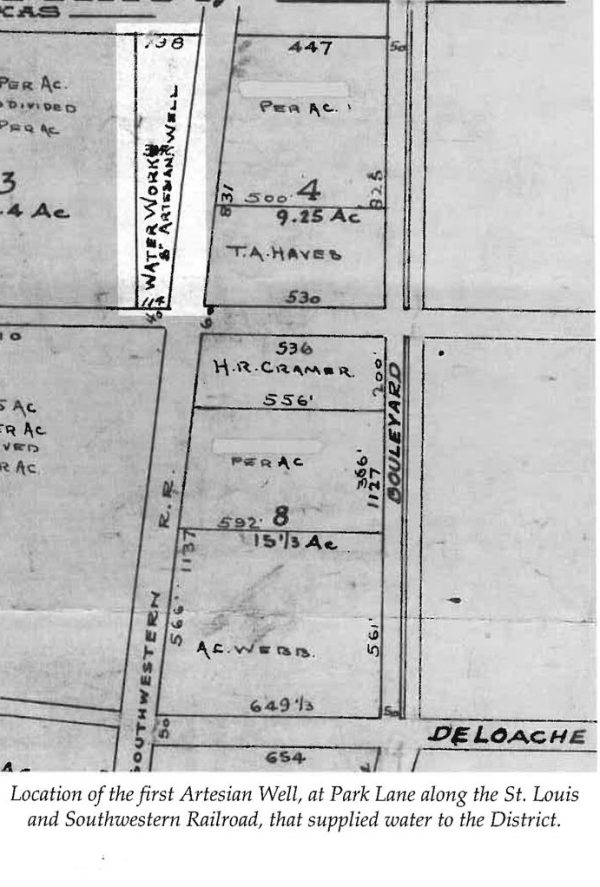
Courtesy of Preston Hollow by Eva Potter Morgan.
This map from 1924 shows the first artesian well, which supplied water to Preston Hollow. Located on Park Lane along the St. Louis and Southwestern Railroad, it was used by the residents of the subdivision in the mid-1920s. But a more general water supply was required as the population grew. So Ira P. DeLoache and 45 other residents petitioned for an election, which was held Aug. 2, 1930. It created the Dallas County Preston Road Fresh Water Supply District No. 10, which was bounded by Royal Lane, Lovers Lane, Airline Road and Midway Road. The Preston Hollow subdivision was just one piece of the area served by the pump house, which was located at 8101 Briarwood Lane.


